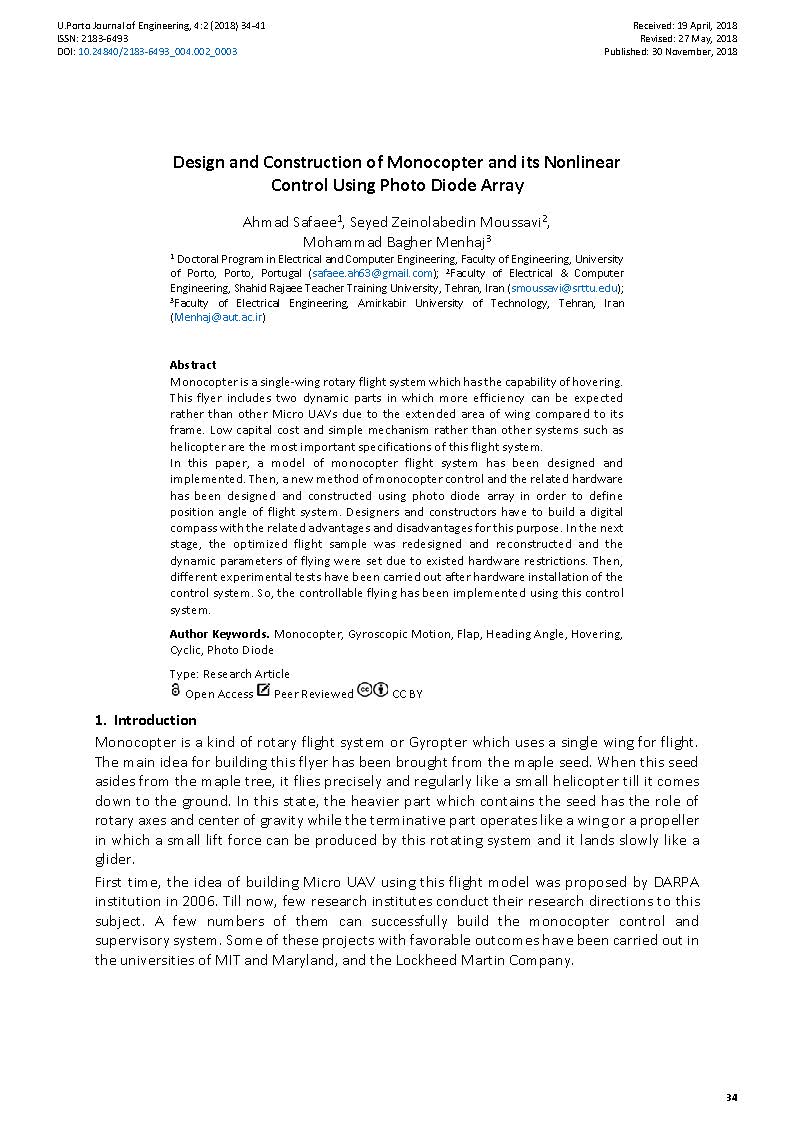Design and Construction of Monocopter and its Nonlinear Control Using Photo Diode Array
Main Article Content
Abstract
Monocopter is a single-wing rotary flight system which has the capability of hovering. This flyer includes two dynamic parts in which more efficiency can be expected rather than other Micro UAVs due to the extended area of wing compared to its frame. Low capital cost and simple mechanism rather than other systems such as helicopter are the most important specifications of this flight system. In this paper, a model of monocopter flight system has been designed and implemented. Then, a new method of monocopter control and the related hardware has been designed and constructed using photo diode array in order to define position angle of flight system. Designers and constructors have to build a digital compass with the related advantages and disadvantages for this purpose. In the next stage, the optimized flight sample was redesigned and reconstructed and the dynamic parameters of flying were set due to existed hardware restrictions. Then, different experimental tests have been carried out after hardware installation of the control system. So, the controllable flying has been implemented using this control system.
Downloads
Article Details
Authors who publish with this journal agree to the following terms:
- Authors retain copyright and grant the journal right of first publication with the work simultaneously licensed under a Creative Commons Attribution License that allows others to share the work with an acknowledgement of the work's authorship and initial publication in this journal.
- Authors grant the journal the rights to provide the article in all forms and media so the article can be used on the latest technology even after publication and ensure its long-term preservation.
- Authors are able to enter into separate, additional contractual arrangements for the non-exclusive distribution of the journal's published version of the work (e.g., post it to an institutional repository or publish it in a book), with an acknowledgement of its initial publication in this journal.
- Authors are permitted and encouraged to post their work online (e.g., in institutional repositories or on their website) prior to and during the submission process, as it can lead to productive exchanges, as well as earlier and greater citation of published work (See The Effect of Open Access).

